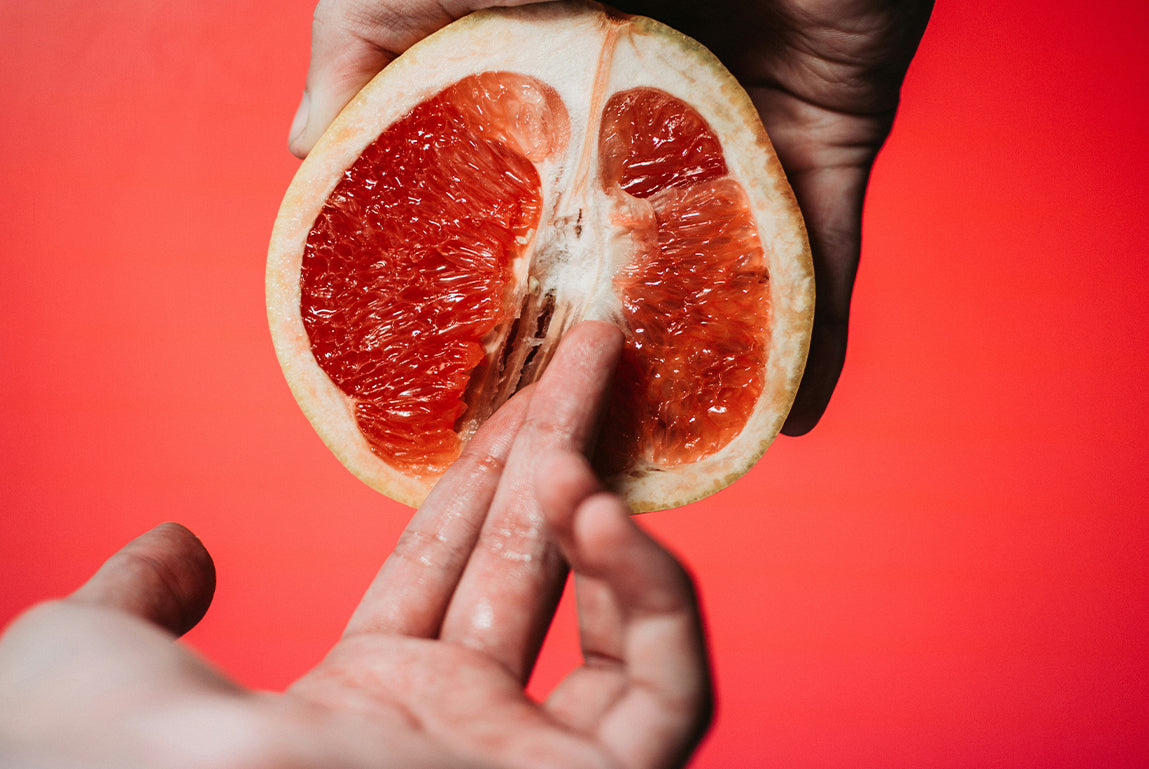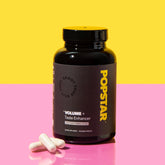

Table of content
Much like the Loch Ness Monster or Bigfoot, the female orgasm can seem elusive. Despite all advancements in sexual health, the female orgasm remains for many a complete mystery. What do we have to do, get Scooby and the gang in on the job? Although, now that I think about it, I bet that Fred knows his way around 😏. Why is the female orgasm, or the “Big O '' shrouded in such mystery? Who can we call? Ghostbusters? Not quite. The answer is Popstar. While we may not know anything about ghosts, we sure as hell know a lot about busting. Popstar has the tips to make your woman say “oh” and help you reach the “big O” by dispelling common female orgasm myths.
I know what you’re thinking? How is it 2024 and we still have questions about the female orgasm. Dr. Ruth is 95 years old for crying out loud. By now, every man should know how to satisfy their female partner. Well, culturally, the scientific community tasked with understanding sex is largely male-dominated and focused. The patriarchy strikes again.
Why?
Before we understand the how, we must understand the why. The reason for the male orgasm is pretty obvious. The male orgasm is directly tied to ejaculation for procreation. The male orgasm is like blowing on a dandelion, just spreading seeds. The only difference being you don’t get to make a wish. The male orgasm has a blatant evolutionary purpose.
The elusive female orgasm isn’t quite as obvious. One theory is that the female orgasm was primarily to induce ovulation. Somewhere along the line, evolution introduced spontaneous ovulation, where a woman’s ova are released without copulation. Translation: her eggs are released without knocking boots. With spontaneous ovulation, the female orgasm is free to make its secondary role its primary: pleasure.
With the female orgasm no longer having any evolutionary benefit, pleasure becomes the main focus, and can help bond women with their partners (assuming it is a duet and not a solo performance). Orgasmic pleasure, is well, for lack of a better word, orgasmic. The pursuit of pleasure can encourage women to have more sex, which one could argue circles back to its original evolutionary purpose. That being said, we are fully onboard for the pleasure over procreation impulse.

How?
All good things come in fours: The Beatles, KISS, Led Zepplin, the Ghostbusters. The same can be said for orgasms. An orgasm comes in four phases. The first phase is excitement: increase in muscle tension, quickening of the heart rate and breathing, skin flushing and production of natural lubrication! The body is preparing itself for a pleasurable take-off.
Now that our body is begging for more, Phase 2 can commence. The plateau phase as it is referred to is basically a heightened version of Phase 1. Phase 2 involves increased sensitivity of the genital tissues and breasts, accompanied by the beginning of small muscle spasms.
Time for Phase 3. Now we are really cooking with grease. Time for the big finale. There is an increase in brain discharge, involuntary muscle contraction, increased cardiac output and respiratory rate, and the release of tension.
Any good climatic climax (is that redundant) needs a cool down. The body slowly returns to an unstimulated state during what is called the refractory period during which additional orgasm is not possible. Some women have a much shorter refractory period than their male counterparts, meaning more pleasure can be just around the riverbend.
Female Orgasm Myths & Fables
If you have been following our blog you know that we love to debunk a myth. We are practically the mythbusters of busting a nut. So what are some commonplace fables of the female orgasm. Probably the most common misconception is that orgasm through penetrative sex is common. *Game show buzzer incorrect sound*. Women are lucky in the sense that they have more than one way they can achieve orgasm: vaginally, through clitoral stimulation, or even through the cervix. If you or your partner are very talented, it can be a blend of all three. Sort of like a yummy sex smoothie!
In the past it was believed that women who could not achieve vaginal orgasm were “sexually dysfunctional” or “damaged”. Now we know that plenty of women do not orgasm from penetration and that orgasm can occur without penetration at all.
Another common myth is that orgasms don’t change. A lot of people think that a female orgasm is a sure fire thing. Well, honey, even Samanth Jones “lost” her orgasm. There are numerous factors that can affect a woman’s orgasm. A woman’s ability to achieve orgasm can change during their menstrual cycle. They can be more intense or less pleasurable, depending on the partner. Stress and certain medications can make it a bit more difficult for orgasms to occur. Naturally changes in the body such as menopause can also significantly impact pleasure and orgasmic potential.
Our next myth is that the inability to orgasm is a psychological problem. I’m almost certain a man made this one up. I think the connotation is the problem here. While there could be a psychological block stopping you from reaching a climax, there is nothing wrong with you psychologically. There’s a difference. There are numerous other factors that affect a woman's ability to achieve an orgasm. It could be a physical or emotional block, or a protective response to prior sexual trauma.
Just like there are health benefits to the big O, there are certain health issues that could hinder you from being able to climax. High blood pressure and diabetes can negatively impact blood flow to the genitals which can make orgasm challenging. There are numerous anti-depressants that are notorious for affecting a woman’s ability to climax. Hormone changes that can occur from certain birth controls, menopause, and even pregnancy can affect a woman’s libido, in turn, affecting the production of lubrication and the ability to climax. Certain surgical procedures can also mess with orgasm. Surgeries like hysterectomy, labiaplasty, and midurethral slings placed for incontinence can interfere with or sometimes render a woman incapable of achieving orgasm.
Anorgasmia, a condition where a person is physically unable to have an orgasm is not uncommon. It is estimated that 10-15% of women experience anorgasmia. Men can suffer from anorgasmia as well. To learn more about anorgasmia, check out our blog post here.
Moving onto our next myth: good sex equals an orgasm. I know I didn’t pay much attention in algebra, but I definitely must’ve zoned out during this lesson. This is false of course. First of all, what someone deems as “good sex” varies from person to person. Clitoral stimulation might be one woman’s must-have, another may need vaginal penetration, while another may prefer an emotional connection. Good sex can’t be defined universally.
Another common misconception regarding the female orgasm is that most women can have multiple orgasms. As we now know, the refractory time for women is shorter, so one would think that achieving multiple orgasms would be easier. That being said, it is false that this occurs in the majority of women. Research shows that only about 15% of women are multi-orgasmic. So if you aren’t going back for seconds, don’t fret, most women aren’t able to either.
The final fable on our list of myths is that nothing can be done to improve your orgasm. This is unequivocally false. There is plenty a woman can do to improve their sexual experience. Increasing physical exercise has been known to support better overall sexual health. You know what they say, if you look good you feel good. The same can be said when it comes to orgasms. Women with a positive self body image tend to have better sexual experiences. Exercise is just one way a person can feel better about their looks.
Just like many aspects of a relationship, communication plays a huge role in the sexual experience. Women who receive daily affection from and/or have intimate communication with a partner tend to have better sexual function. It is important to communicate your sexual needs to your partner as well. How will your partner know what really gets you off if you don’t tell them? Unless your partner is clairvoyant like Teresa Caputo, how are they to know!?
The best way to dispel the fables of the female orgasm and put an end to the myths surrounding the big O, is through masturbation! The more you explore and the more you know your body, the closer you’ll be to your biggest climax yet! We hope we helped make the female orgasm feel less elusive, mysterious, and daunting! Consider this myth busted!








